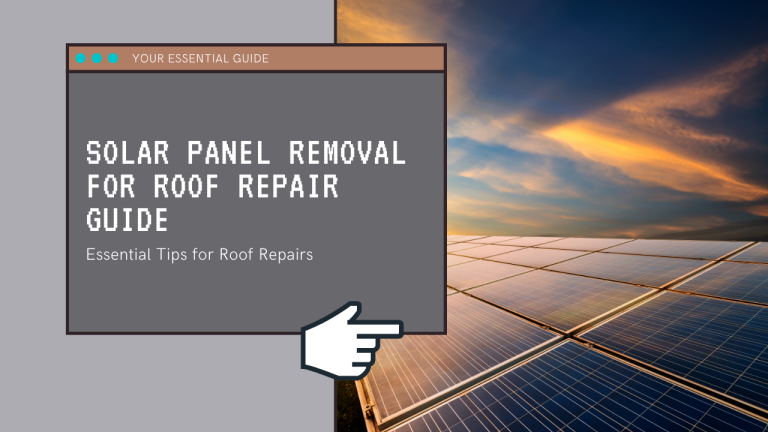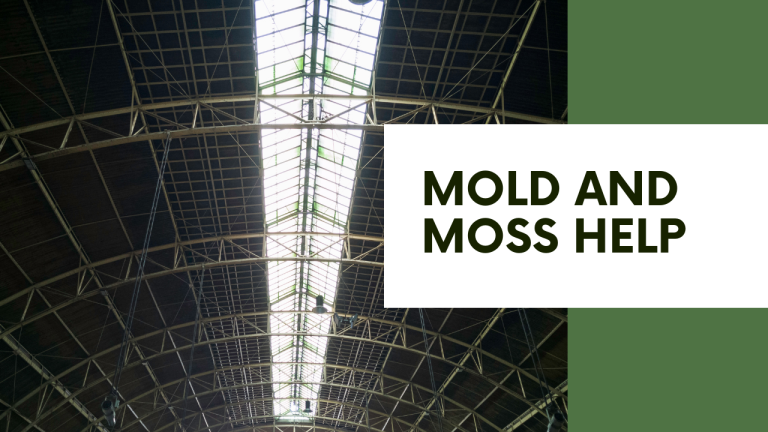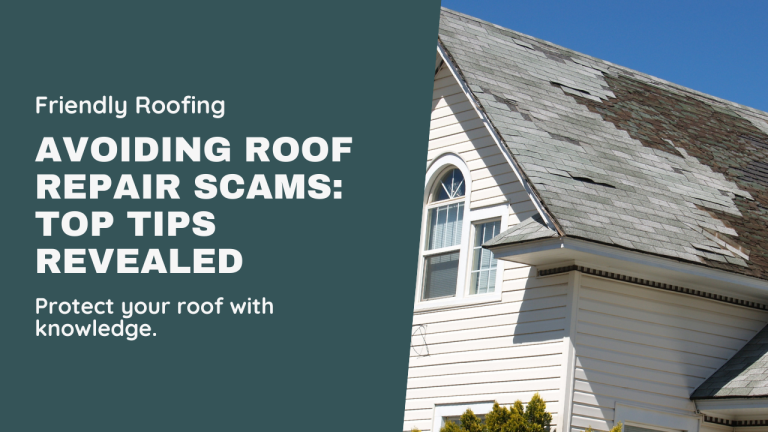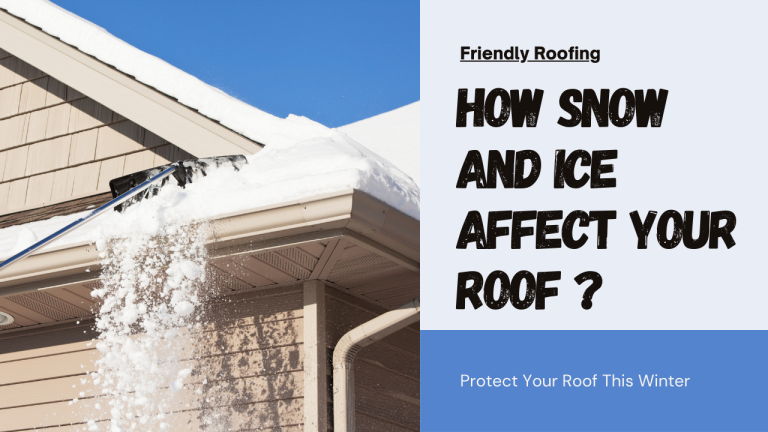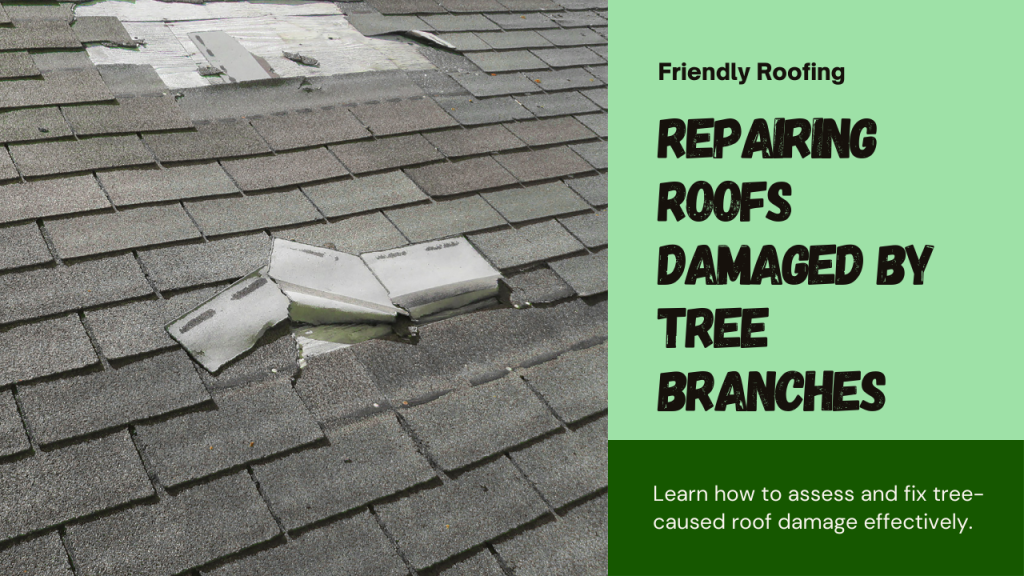
Tree branches can cause significant damage to roofs, leading to costly repairs and potential safety hazards. Repairing roofs damaged by tree branches is a critical task that homeowners must address promptly to prevent further deterioration and maintain the structural integrity of their homes. This comprehensive guide will explore the various aspects of tree-related roof damage, immediate steps to take after damage occurs, repair techniques, preventive measures, and the benefits of professional roof repair services.
Understanding Tree-Related Roof Damage
Types of Damage Caused by Tree Branches
Tree branches can inflict various types of damage on roofs, depending on their size, weight, and the force with which they impact the roof. Common types of damage include abrasion and scratching of shingles, structural damage from falling branches, and accumulation of debris. Overhanging branches can rub against shingles, causing abrasion and scratching that weaken the roofing material over time. Large branches that fall onto the roof can cause significant structural damage, including broken shingles, punctured roof decks, and damaged rafters. Leaves, twigs, and other debris from trees can accumulate on the roof, leading to moisture retention, mold growth, and clogged gutters.
Signs of Roof Damage from Trees
Homeowners should regularly inspect their roofs for signs of damage caused by tree branches. Key indicators include missing, cracked, or broken shingles, mold or moss growth, visible dents or punctures, and water stains or leaks inside the house. Shingles that are visibly damaged or missing can indicate that tree branches have impacted the roof. Excessive moisture from accumulated debris can lead to mold or moss growth on the roof. Large branches can cause dents or punctures in the roofing material, compromising its integrity. Water stains on ceilings or walls and leaks inside the house are signs of roof damage that may be caused by tree branches.
Immediate Steps to Take After Tree Damage
Safety Precautions
Before inspecting or repairing roofs damaged by tree branches, homeowners should take safety precautions to ensure their well-being. Ensuring the area is safe before inspection is crucial. Check for any immediate hazards, such as hanging branches or electrical wires, before approaching the damaged area. If it is safe to do so, remove any loose branches or debris that could pose a risk during the inspection.
Initial Damage Assessment
Conducting an initial damage assessment is crucial for determining the extent of the damage and planning the necessary repairs. A visual inspection of the roof and the surrounding area for visible signs of damage is essential. Assess the structural integrity of the roof by looking for sagging or other signs of compromised support. Documenting the damage with photos for insurance purposes and to help with repair planning is also important.
Repairing Minor Roof Damage
Shingle Replacement
For minor damage, such as a few broken or missing shingles, homeowners can perform simple repairs to restore the roof’s integrity. Identifying and replacing damaged shingles is the first step. Locate the damaged shingles and remove them carefully. Replace them with new shingles, ensuring they are properly aligned and secured. Re-sealing lifted shingles with roofing cement is also necessary to prevent water infiltration and further damage.
Clearing Debris
Regularly clearing debris from the roof and gutters is essential for preventing moisture-related issues. Removing leaves, twigs, and other debris from the roof surface using a roof rake or a leaf blower is important. Maintaining clean gutters to allow proper water drainage and prevent water damage to the roof and foundation is also crucial.
Addressing Major Roof Damage
Temporary Fixes
In cases of significant damage, temporary fixes can provide immediate protection until permanent repairs can be made. Using tarps to cover holes and prevent water infiltration is a common temporary solution. Securely cover holes or large damaged areas with tarps to prevent water infiltration and further damage. Quick patching techniques using roofing tape or sealant can temporarily seal cracks or punctures.
Permanent Repairs
Permanent repairs for major roof damage often require professional expertise to ensure safety and compliance with building codes. Roof deck patching for holes and penetrations involves removing the damaged section and replacing it with new decking material. Structural repairs to address any damage to rafters or trusses by reinforcing or replacing the affected components are also necessary. Hiring professional contractors for extensive damage is advisable, as they have the necessary skills and equipment to perform the repairs safely and effectively.
Preventive Measures
Regular Tree Maintenance
Preventing roof damage from tree branches involves regular tree maintenance to minimize the risk of branches impacting the roof. Trimming overhanging branches regularly to reduce the risk of them falling or rubbing against the shingles is essential. Pruning young trees to control their growth and prevent them from becoming a future hazard is also important. Removing any trees that are unstable or diseased, as they pose a higher risk of falling and causing damage, is crucial.
Roof Maintenance
Maintaining the roof itself is equally important in preventing damage from tree branches. Conducting regular roof inspections to identify and address early signs of damage before they become major issues is necessary. Installing gutter guards to prevent debris buildup and ensure proper water drainage is also beneficial. Using impact-resistant roofing materials that can withstand the impact of falling branches and other debris is a wise investment.
Working with Insurance
Homeowners should familiarize themselves with their insurance policies to understand what types of tree-related damage are covered. Reviewing the policy to determine if damage caused by tree branches is covered and under what conditions is essential. Following the necessary steps to file a claim, including providing documentation of the damage and any temporary repairs made, is also important.
To ensure that all damage is properly assessed and covered, homeowners can take the following steps. Working with insurance adjusters during their inspection and providing them with all necessary documentation is crucial. Ensuring that all areas of damage are thoroughly assessed and included in the claim is also important.
Benefits of Professional Roof Repair Services
Why Hire a Professional?
Hiring professional roof repair services offers several advantages. Professional roofers have the expertise and experience to handle tree-related roof damage effectively. They have access to the proper tools and materials needed for high-quality repairs. Professional roofers ensure that repairs are performed safely and in compliance with local building codes.
Choosing the Right Roofing Contractor
Selecting a reputable roofing contractor is crucial for ensuring quality repairs. Look for contractors with a good reputation, proper licensing, and insurance coverage. Ask about their experience with tree-related roof damage, the materials they use, and their warranty policies. Checking references and reading reviews from previous customers to gauge the contractor’s reliability and quality of work is also important.
Make Use of This Guide for Repairing Roofs Damaged by Tree Branches
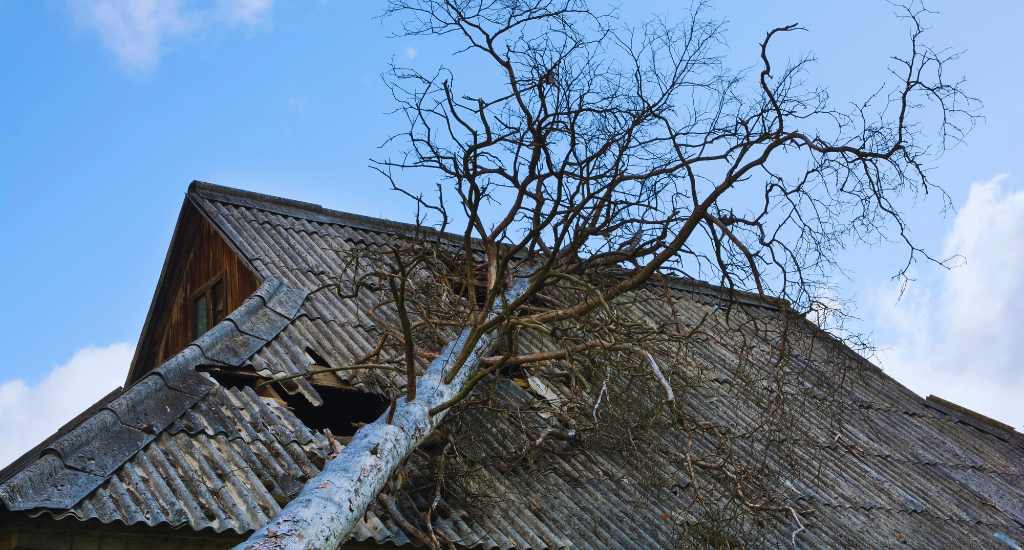
Repairing roofs damaged by tree branches is a critical task that requires prompt attention and proper techniques to ensure the safety and longevity of the roof. By understanding the types of damage that tree branches can cause, taking immediate steps to assess and address the damage, and implementing preventive measures, homeowners can protect their roofs from future harm. Additionally, working with professional roof repair services can provide peace of mind and ensure that repairs are performed to the highest standards. Taking proactive steps in maintaining both trees and roofs is essential for preserving the structural integrity and value of a home. For those in need of professional assistance, contacting a reputable roofing contractor is a wise investment in the long-term health of their property.

